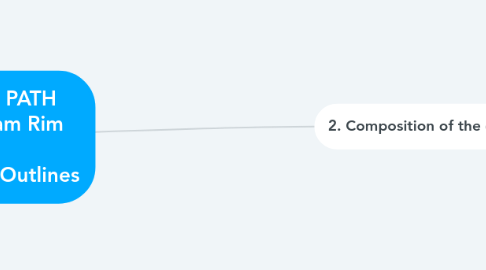
1. 1. The introductory elements of the explanations
1.1. A. Expression of veneration
1.2. B. Vow of composition
1.3. C. Identification of the Dharma to be explained in the context of what the title means
2. 2. Composition of the explanations themselves
2.1. A. Correspondence with the manner of explanation proposed by the scholars
2.2. B. The actual explanations in accordance with that
2.2.1. 1. Showing the greatness of the author in order to show that his Dharma is a pure source
2.2.1.1. A. The root and actual author
2.2.1.2. B. Atiśa’s greatness
2.2.1.2.1. 1. How Atiśa took birth in an excellent family
2.2.1.2.2. 2. How Atiśa obtained his excellent qualities on that basis
2.2.1.2.3. 3. Having obtained them, how Atiśa performed deeds for the sake of the teachings
2.2.2. 2. Showing the greatness of his Dharma in order to generate respect for the instructions
2.2.2.1. A. Identifying the Dharma
2.2.2.2. B. Presentation of this text as the three: complete, easily applicable, and a particularly noble system
2.2.2.3. C. Presentation of this text as possessing the four greatnesses
2.2.2.3.1. 1. The greatness of understanding all teachings as without contradiction
2.2.2.3.2. 2. The greatness of all of the Buddha’s teachings occurring to you as instructions
2.2.2.3.3. 3. The greatness of allowing you easily to discover the Victor ’s intention
2.2.2.3.4. 4. The greatness of a great misdeed stopping by itself
2.2.3. 3. How the Dharma possessing those two greatnesses should be listened to and explained
2.2.3.1. A. How to listen
2.2.3.1.1. 1. Thinking about the advantages of listening to the Dharma
2.2.3.1.2. 2. Developing respect for the Dharma and those who teach the Dharma
2.2.3.1.3. 3. The actual way to listen
2.2.3.2. B. How to explain
2.2.3.2.1. 1. Considering the advantages of explaining the Dharma
2.2.3.2.2. 2. Generating respect for the Teacher and the Dharma
2.2.3.2.3. 3. What kind of attitude and activities to explain with
2.2.3.2.4. 4. Distinction between who the explanations should and should not be given to
2.2.3.3. C. Generally how to proceed at the end
2.2.3.3.1. 1. What to do at the end—the actual things to do:
2.2.3.3.2. 2. The benefits of this
2.2.3.3.3. 3. The general mode of behavior of holy beings
2.2.3.3.4. 4. The advice to cherish them since it is a great fault to turn away from them
2.2.4. 4. The stages by which a student should be guided through the actual instructions
2.2.4.1. A. The root of the path: how to rely on a spiritual teacher
2.2.4.1.1. 1. The somewhat elaborate explanation for generating certainty
2.2.4.1.2. 2. The condensed presentation of how to sustain meditation
2.2.4.2. B. The stages of how the students train their minds after they have relied on the teacher
2.2.4.2.1. 1- The basis of freedom, an exhortation to take its essence
2.2.4.2.2. 2- How to take the essence
3. 3. Conclusion of the explanations
3.1. A. How the treatise was composed
3.1.1. 1. Explaining the greatness of the instructions
3.1.1.1. A. The greatness that, in general, all the scriptures of sūtra appear as instructions
3.1.1.2. B. The greatness that, in particular, all the essential points of the paths shared by sūtra and mantra are made clear
3.1.1.3. C. The greatness of removing places of error about the concentration of yogis through a clear explanation of how the concentration common to non-Buddhists and Buddhists is achieved
3.1.2. 2. The purpose of writing a treatise that has such great qualities
3.1.3. 3. Indication of the sources: the instructions from which the subject matter of this treatise was transmitted
